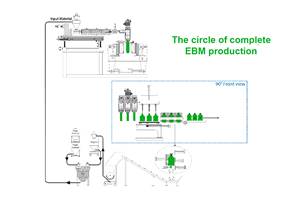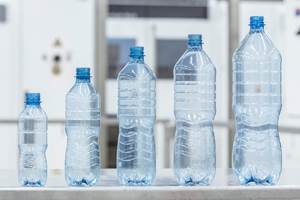Construction Market Boomed in 2015
End-Market Analysys
Next year is shaping up strong, too, though growth could peak around summertime.
In June, housing permits were seeing month-over-month growth, and the annual rate of growth looked like it was going to bottom out and start accelerating. Total construction spending was growing at the fastest rate since May 2012 and the second-fastest rate since February 2002. And non-residential construction spending was growing at a faster rate than residential spending.
Since then, housing permits grew at an accelerating rate. The annual rate of growth increased to 10.4% in August 2015 from 4.7% (since revised) for March 2015. In June, housing permits increased 40.1% compared with one year ago. Other than in June, the month-over-month rate of change has been much more modest. The annual rate of growth appears to have peaked in August, as it slowed to 9.7% in September. Based on the trend in interest rates (see chart), it is likely that housing permits have seen their peak rate of growth and will grow more slowly in 2016.
While housing permits seem to have peaked, total construction spending is on an absolute tear. In February and March 2015, the one-month rate of change in total construction spending was more than 12%. But, from April to August, the one-month rate of change has been above 20% each month. In August, the month-over-month rate of change was 22.5%. This was the fastest rate of growth in the history of this data set. In fact, the period from April to August is the only time ever when the one-month rate of change has been above 20%.
Residential construction spending is growing at an extremely rapid pace too. In fact, it grew even faster than total construction spending from May to August.
The annual rates of growth for both total and residential construction spending should accelerate in the first half of 2016. But at some point next year, the annual rate of growth in construction spending will peak. That’s because interest rates are already moving in a negative direction for future construction spending.
The real 10-yr Treasury Bond rate was 1.86% in September 2015—15 basis points higher than it was in August. This was the highest the real 10-yr Treasury rate has been since February 2011. Moreover, this was the fifth month in a row that the year-over-year change in the real rate was positive and the eight month in a row that it has increased from the previous month.
The nominal rate is still only about a third of its historical average. However, inflation is historically low. The current annual average inflation dipped back into negative territory (-0.04%) in September. That’s the fifth time in eight months the annual inflation rate has been negative. Therefore, the real rate is about two-thirds of its historical average. Low inflation is keeping real rates relatively high relative to the trend in nominal rates (remember, the real rate is the nominal rate minus inflation).
For processors serving this market, expect 大象传媒 to grow faster through much of 2016. But the leading indicators for the construction market are pointing toward a peak around the summer of 2016.
ABOUT THE AUTHOR: STEVE KLINE JR.
Steven Kline Jr. is part of the fourth-generation ownership team of Cincinnati-based Gardner Business Media, which is the publisher of Plastics Technology. He is currently the company’s director of market intelligence. Contact: (513) 527-8800 email: skline2@gardnerweb.com; blog: gardnerweb.com/economics/blog
Related Content
Get Color Changes Right In Extrusion Blow Molding
Follow these best practices to minimize loss of time, material and labor during color changes in molding containers from bottles to jerrycans. The authors explore what this means for each step of the process, from raw-material infeed to handling and reprocessing tails and trim.
Read MoreWhat to Look for in High-Speed Automation for Pipette Production
Automation is a must-have for molders of pipettes. Make sure your supplier provides assurances of throughput and output, manpower utilization, floor space consumption and payback period.
Read MoreFirst Water Bottles With Ultrathin Glass Coating
Long used for sensitive juices and carbonated soft drinks, KHS Freshsafe PET Plasmax vapor-deposited glass coating is now providing freshness and flavor protection for PET mineral water bottles.
Read MorePaperless ‘Smart Factory’ Based on Automated Production Monitoring
Tier 1 automotive molder’s home-built production-monitoring and ERP systems, designed for “the little guy,” boost its efficiency rating and profits.
Read MoreRead Next
Beyond Prototypes: 8 Ways the Plastics Industry Is Using 3D Printing
Plastics processors are finding applications for 3D printing around the plant and across the supply chain. Here are 8 examples to look for at NPE2024.
Read MoreSee Recyclers Close the Loop on Trade Show Production Scrap at NPE2024
A collaboration between show organizer PLASTICS, recycler CPR and size reduction experts WEIMA and Conair recovered and recycled all production scrap at NPE2024.
Read MorePeople 4.0 – How to Get Buy-In from Your Staff for Industry 4.0 Systems
Implementing a production monitoring system as the foundation of a ‘smart factory’ is about integrating people with new technology as much as it is about integrating machines and computers. Here are tips from a company that has gone through the process.
Read More.JPG;width=70;height=70;mode=crop)









